Author: Matt Del Fiacco
Brewers have been experimenting with various types and proportions of ingredients they use to make beer for eons, which has ultimately resulted in the still growing number of distinct styles we know today. It’s fair to say that a good portion of this experimentation starts in the mind of a brewer looking to accentuate specific characteristics in a pre-existing style.
This isn’t the case for a curious concoction that’s noted to have originated in, of all things, modern literature. It’s almost certain drinkers of yore had toyed around with blending various types of beverages, but it was Stephen King’s The Dark Tower Series that introduced the fictional beer-cider hybrid known as Graf to the masses. While the books provide little detail as to what exactly Graf is, it’s described as an apple-based beer-like beverage ranging in strength that’s regularly consumed by residents of Mid-World.
As homebrewers are wont to do, they jumped at the opportunity to try something new and began crafting their own versions of Graf, fermenting varying ratios of wort and apple juice or cider. Lo and behold, the results weren’t disastrous, in fact many took a strong liking to this unique new style. As a beer, cider, and Stephen King nerd, I was excited to brew it myself!
| Making Graf |
For this batch of Graf, I wanted to favor the hard cider characteristics while still providing some flavor and enough nutrients from the wort. As such, I went with a ratio of 3 gallons of apple juice to 2 gallons of moderately hopped wort and fermented it with a yeast I’d previously used for both beer and cider.
Graf
Recipe Details
| Batch Size | Boil Time | IBU | SRM | Est. OG | Est. FG | ABV |
|---|---|---|---|---|---|---|
| 5 gal | 30 min | 22.4 IBUs | 14.9 SRM | 1.048 | 1.003 | 6.0 % |
| Actuals | 1.048 | 1.012 | 4.7 % | |||
Fermentables
| Name | Amount | % |
|---|---|---|
| Pale Ale Malt (Muntons) | 3.812 lbs | 12.67 |
| Apple Juice | 26.289 lbs | 87.33 |
Hops
| Name | Amount | Time | Use | Form | Alpha % |
|---|---|---|---|---|---|
| Magnum | 9 g | 30 min | Boil | Pellet | 12 |
| Cascade | 10 g | 15 min | Boil | Pellet | 5.5 |
| Citra | 28 g | 1 min | Boil | Pellet | 12 |
Yeast
| Name | Lab | Attenuation | Temperature |
|---|---|---|---|
| Nottingham (-) | Danstar | 75% | 57°F - 70°F |
Notes
| Note: Mash water volume is ~2.75 gallons |
Download
| Download this recipe's BeerXML file |
PROCESS
I kicked things off by collecting the water for the mash, which given the smaller volume, I did using an old aluminum kettle on my stove top. Brings ya back!
While the water was heating up, I weighed out and milled the grain directly into the fabric filter.
Once the water was properly heated, I added the grain to the kettle, gave it a stir, and made sure it was sitting at my target mash temperature.
I then weighed out the hop additions.
During the mash rest, I sanitized my fermentation vessel and prepared the juice.
When the mash was complete, I removed the grains and brought the wort to a boil.
I used a stainless filter for the kettle hops in order to reduce trub making its way to the fermentor, as my small kettle has no bottom valve.
During the boil, I took a hydrometer measurement of the juice to get an idea of what impact it would have when combined with the wort.
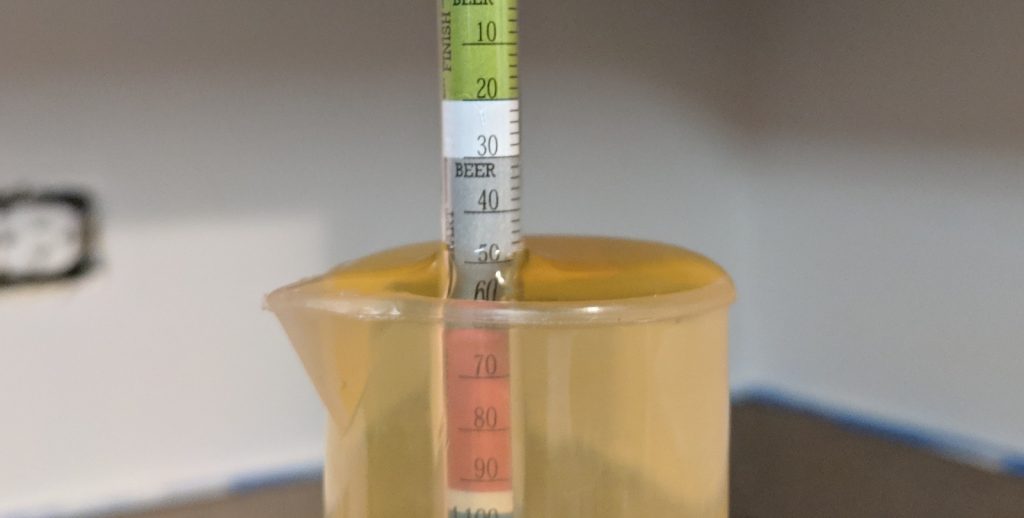
As the boil was nearing completion, I poured the juice into the fermentor.
Once the boil was finished, I removed the hop filter and poured the wort directly into the fermentor, relying on the cool juice to assist in chilling.
I placed the filled fermentor in my chamber where it was left to finish chilling to my desired fermentation temperature of 64°F/18°C.
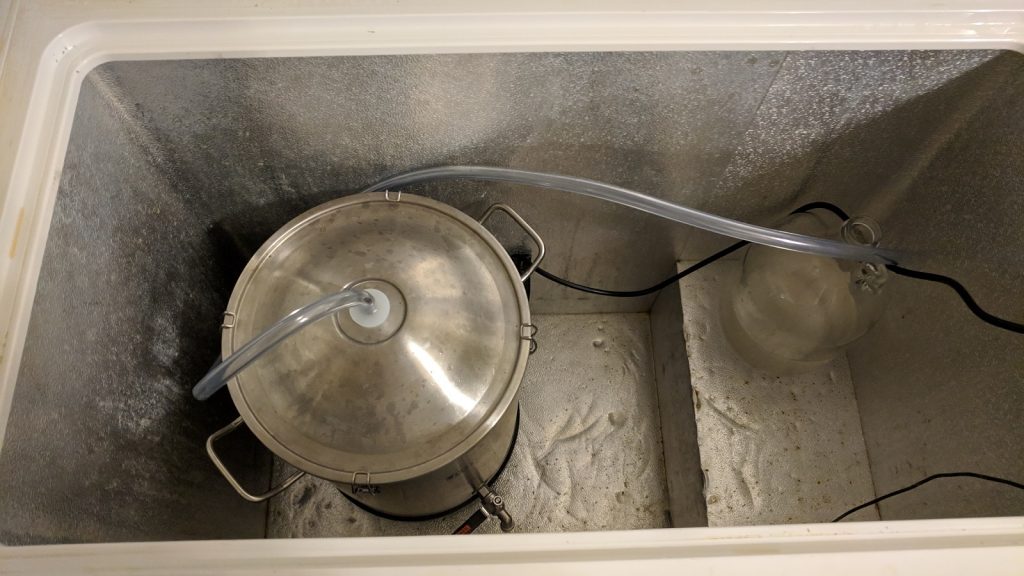
A hydromter measurement of the blended liquid showed it was right at my target of 1.048 OG.
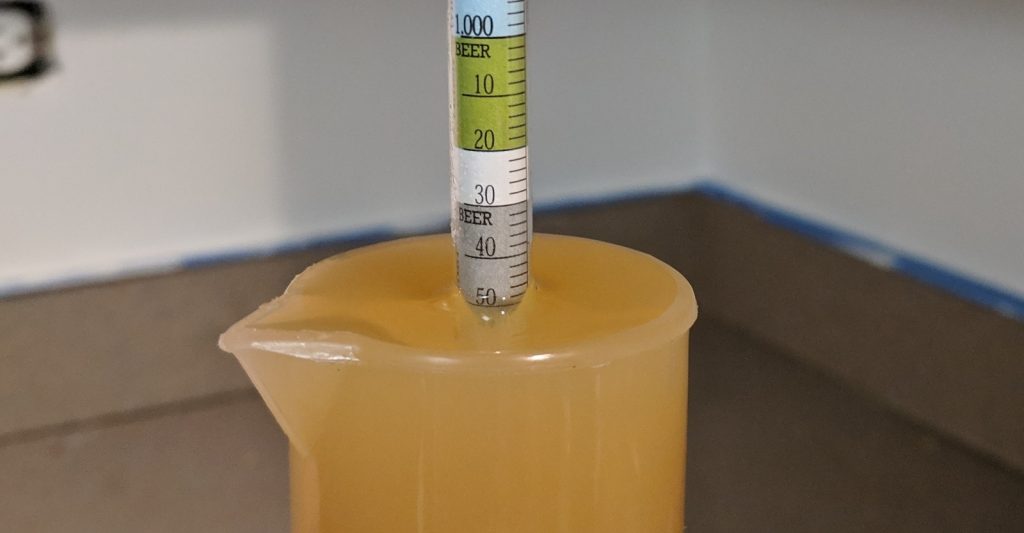
I returned the following morning and pitched a packet of Danstar Nottingham yeast into the juicy wort.
After 2 weeks of fermentation, with all signs of activity absent, I took a hydrometer measurement confirming FG had been reached.
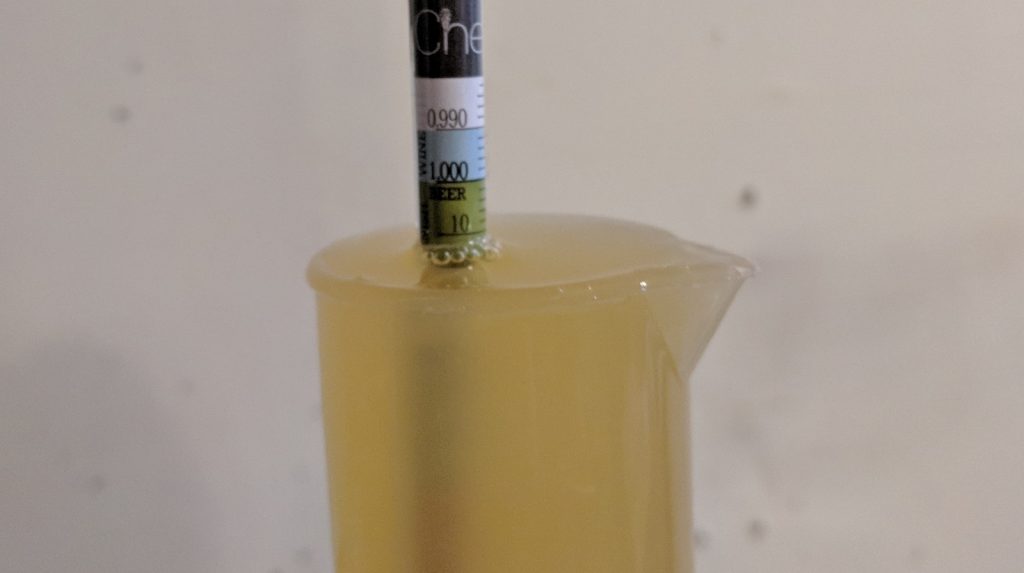
The Graf was kegged and placed in my kegerator where it was burst carbonated overnight. After a week of conditioning at serving pressure, it was ready to serve.
| IMPRESSIONS |
Considering Graf’s origin, there was something deeply satisfying to me about taking what was in essence an idea from the mind of the great Stephen King and turning it into a drinkable reality. Having never made one before, I was forced to rely on my own interpretation of what was written in The Dark Tower series and reports from those who have made it before, and I really wasn’t sure what to expect.
The aroma of the finished Graf was definitely more cider-like than beer-like, though the hops added a familiar beery character, resulting in a restrained apple and citrus nose that supported a predominantly white wine profile. As for the flavor, my immediate impression was that it ended up more tart than expected, to the point it sort of forced the Citra hop and toasty malt characteristics to the background, becoming more prominent at the end of the sip. I’m compelled to think the carbonation likely contributed to assertive acidity I perceived, though I felt it was a positive attribute. While I thought the Graf was closer to a cider than beer, I was surprised at how light the apple character was, similar to a dry cider with no backsweetening.
While I enjoyed this Graf, my plan for future iterations is to lean more into the beer character by going with a higher ratio of wort to juice. That’s not to say the malt character was absent, I definitely perceived some bready Pale Ale malt flavors, I just think a more substantial malt presence might help to reduce the perceived tartness and bring the Graf into balance. A dose of Vienna or Munich malt seems ideal for this purpose. In the end, I was pleasantly surprised with the outcome of my first Graf and look forward to experimenting with it more in the future!
If you have thoughts about this recipe or experience making Graf yourself, please feel free to share in the comments section below!
Support Brülosophy In Style!
All designs are available in various colors and sizes on Amazon!
Follow Brülosophy on:
FACEBOOK | TWITTER | INSTAGRAM
If you enjoy this stuff and feel compelled to support Brulosophy.com, please check out the Support page for details on how you can very easily do so. Thanks!


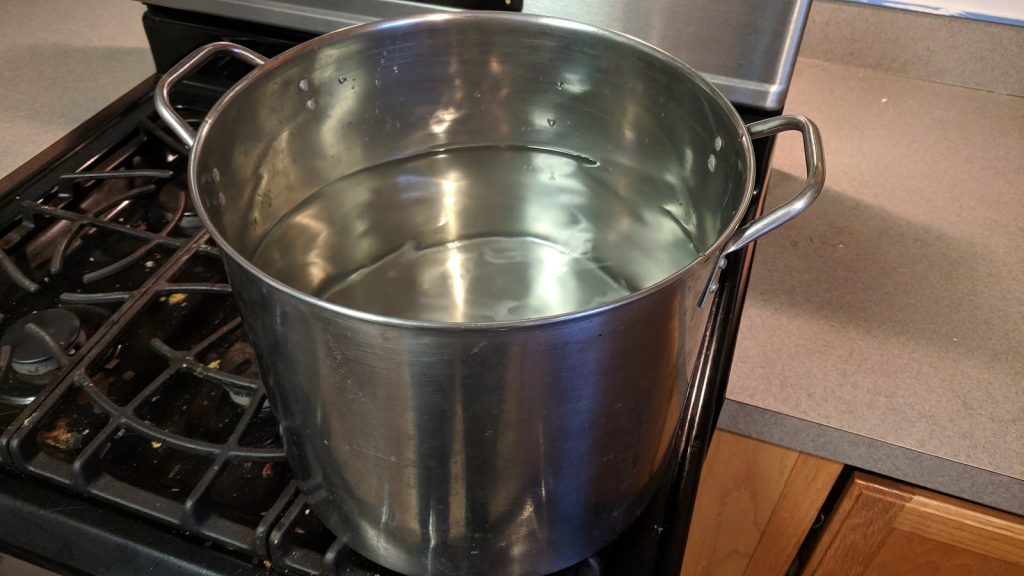
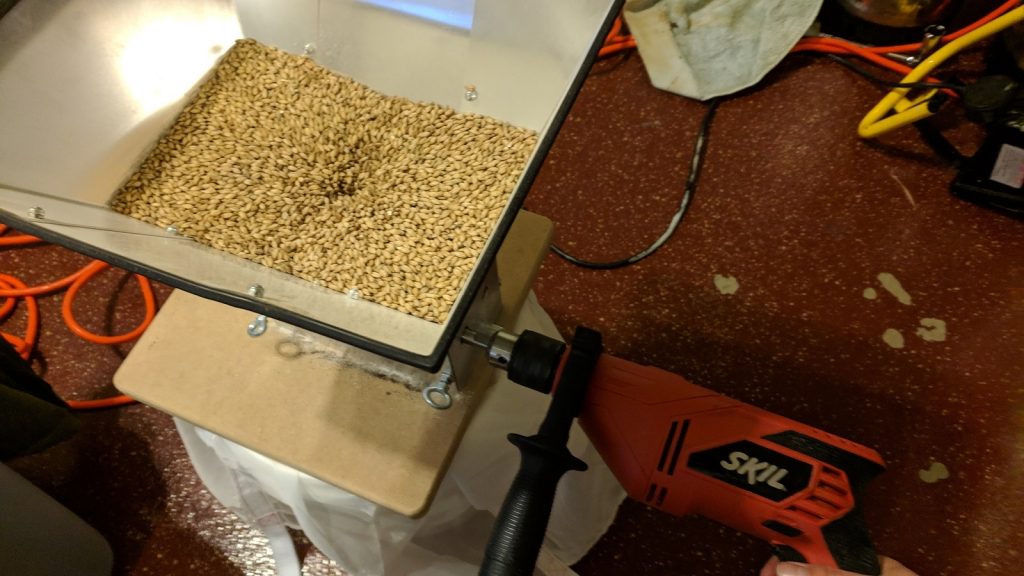
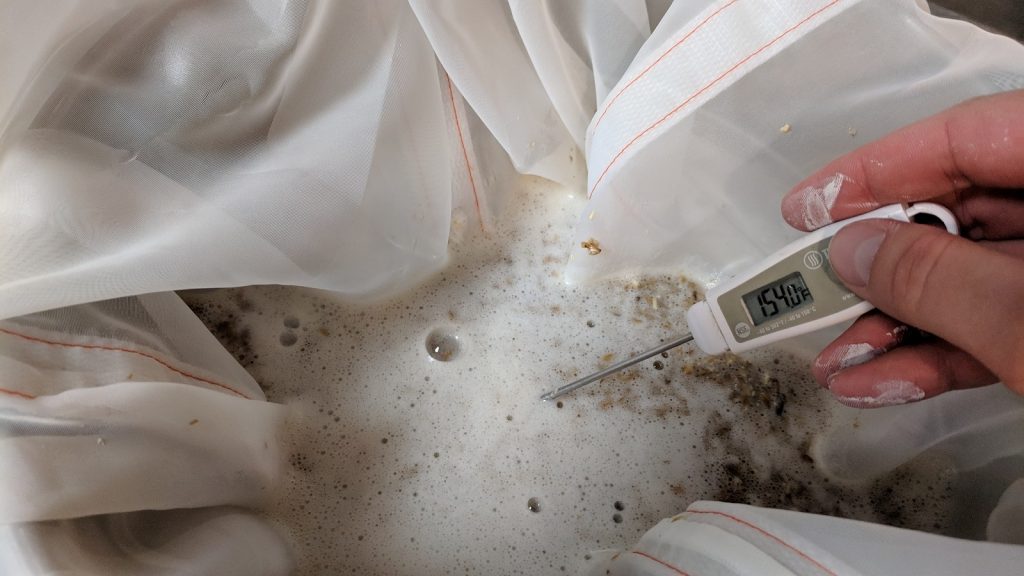
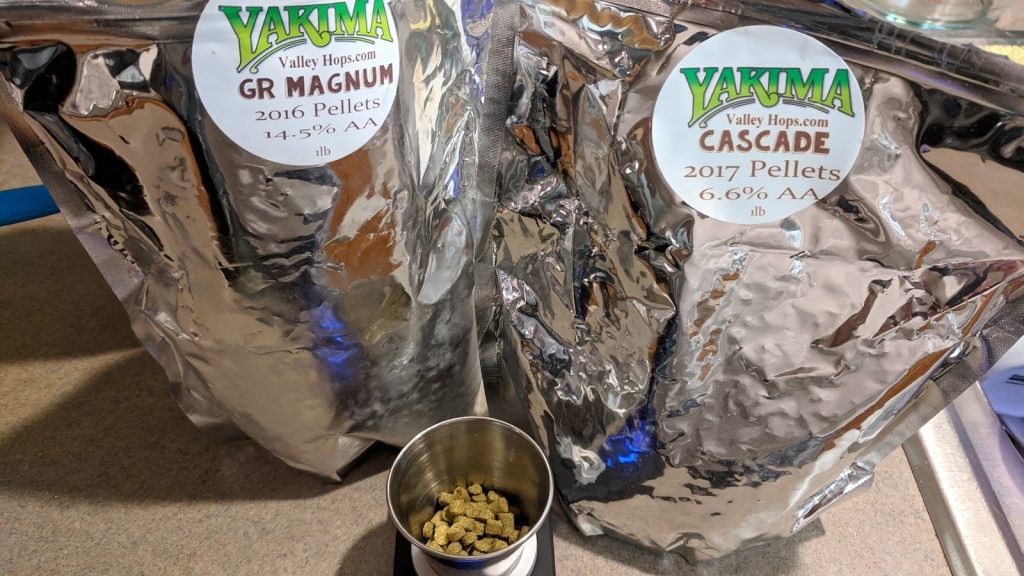
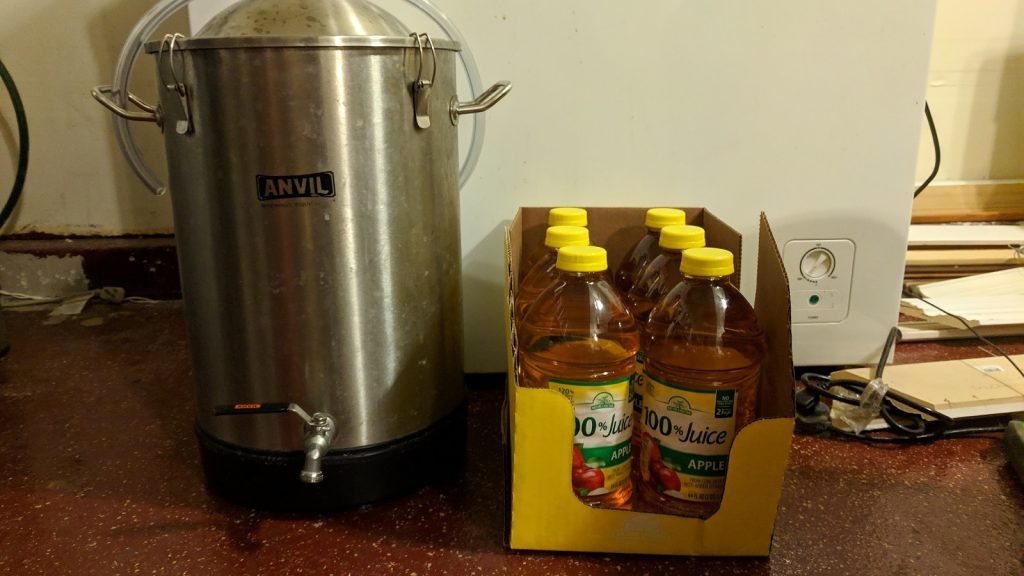
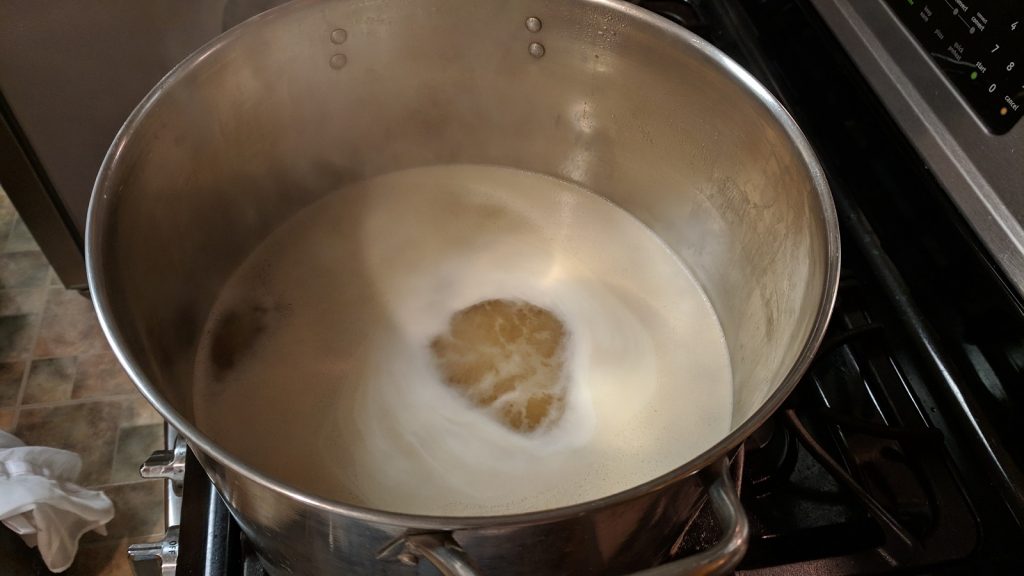
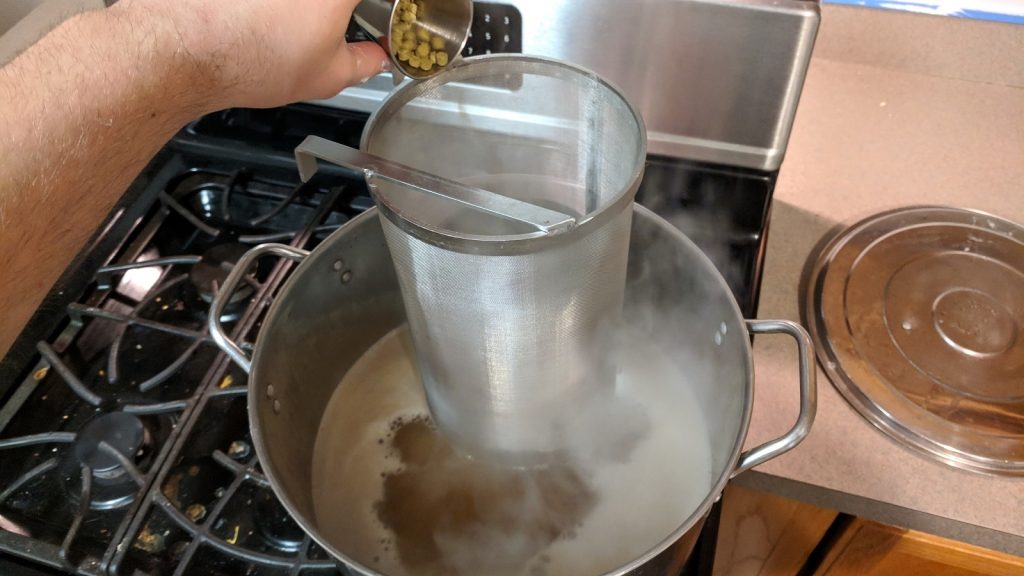
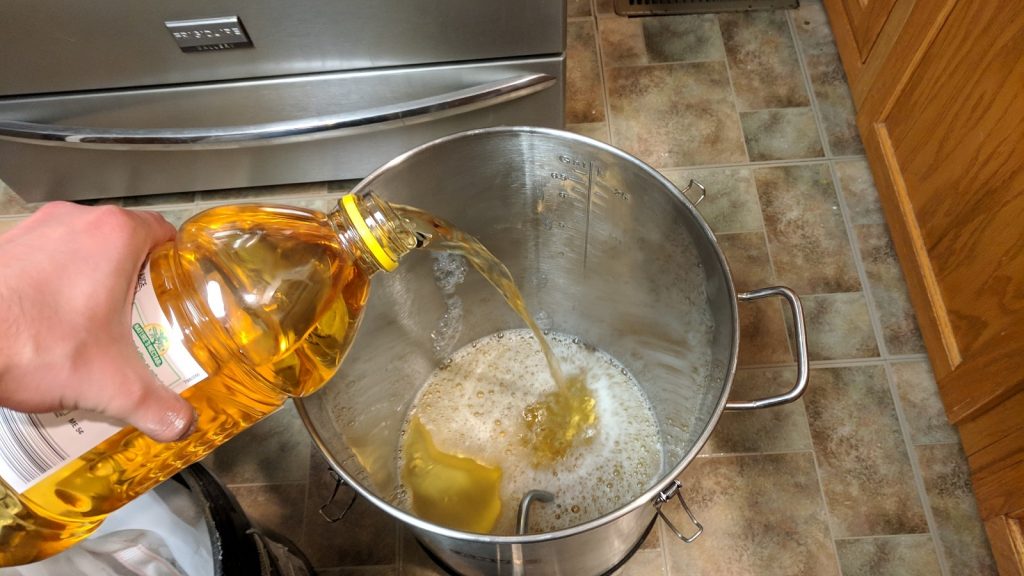
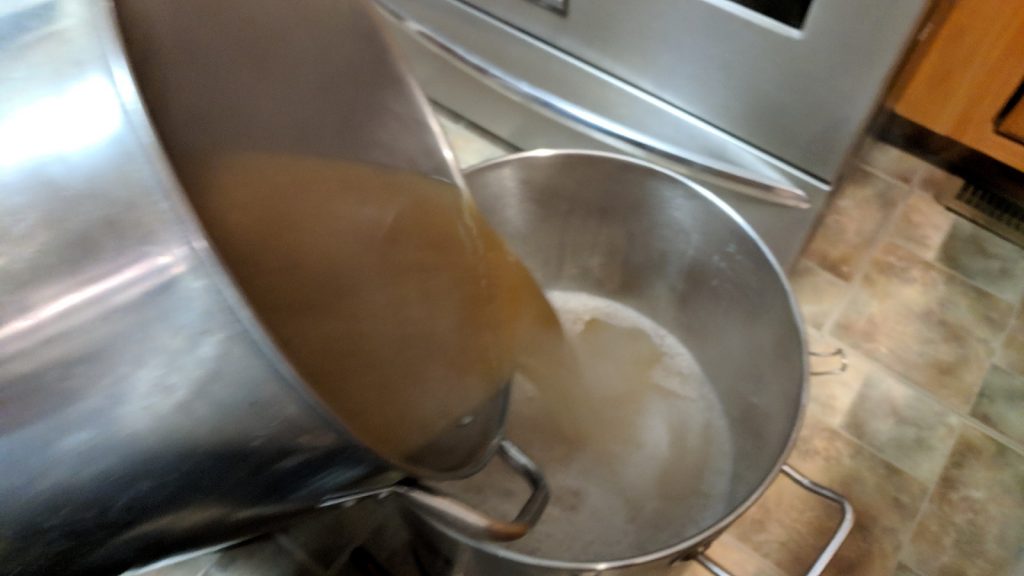
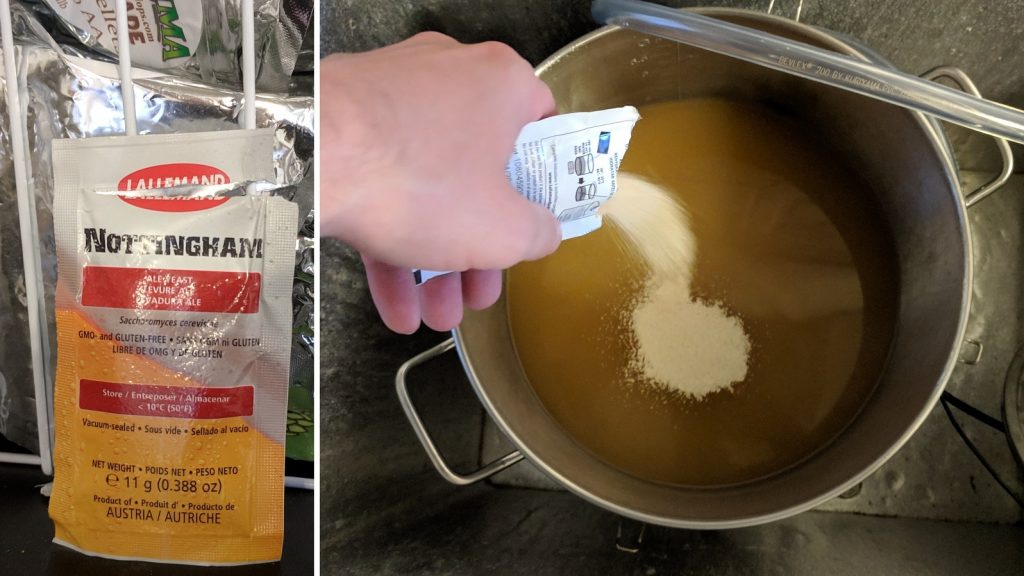
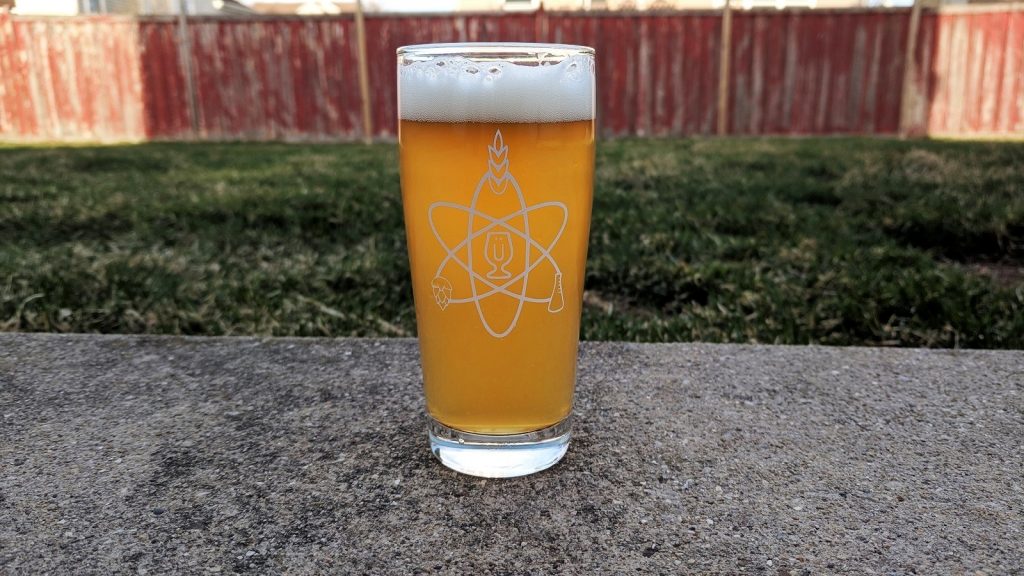











16 thoughts on “Brü It Yourself | Graf”
“See the TURTLE of enormous girth! On his shell he holds the earth. His thought is slow but always kind, he holds us all within his mind. He loves the land and loves the sea, and even loves a child like me.”
All things serve the beam
My last brew was a Graf. Base is a standard American porter recipe topped off with 2 gallons of apple juice for a 5 gallon batch. Also threw in 1 oz. cinnamon sticks with 5 minutes left in the boil. I fermented with Safale S-04. It came out pretty good! Recipe is here: https://www.brewersfriend.com/homebrew/recipe/view/701579/a-portly-graf
I was afraid the apple juice would dry it out too much but nope, not dry at all. There’s almost zero hop character (1 oz. Amarillo @ 60 mins) but I think that’s mostly because the cinnamon masks it. Not so much cinnamon taste or aroma, but bitterness. I’d probably pitch the cinnamon after flameout next time. Overall it has a pretty dark, roasted flavor with subtle apple sweetness and flavor.
Sounds delicious! Spices seem like a great area to explore graf more, and different malt contributions. I’ll give the dark malts a go in the next round.
I like putting fennel seeds in mine. Or star anise, cloves, allspice to make more like a holiday season type drink
Permission error
Whoops, forgot to make the recipe public. It’s working now.
Link doesn’t work
Whoops, forgot to make the recipe public. It’s working now.
To me the addition of spices seems more “appropriate” for this fictional concoction. I doubt Citra is readily available in Mid-World. Unless you have access to magic doors on a beach, and can travel to New York… of course, Citra really wasn’t available in those time periods either.
Maybe in Dark Tower IX – The Drawing of the Citra….
I have had similar experiences with making Graf. A 50/50 ratio of juice to wort tasted too much like cider to me. At that point I may as well just make a cider. If I make one again I will go with 75/25 wort to juice.
I’ve been doing this for years and didn’t even know it was a thing. I do mine as a Belgian pale and sometimes a stronger ‘triple’ style. I usually do two gallons of juice to three gallons of wort and, depending on the year and my mood, aim for between 1.055 and 1.080 OG. Hopped to those Belgian styles, the apple shows through nicely, although it’s more of an interesting background note the higher OG you go. My most recent version was thrown together with what I had on hand because of a friend’s donation of fresh cider from his backyard trees. It is not of any particular ‘style’, but ended up with a lot of caramel 60 and a packet of saison yeast. It makes me think of a caramel dipped apple.
Also, if you dump hot wort into your cold juice you will set the pectin in the juice and end up with a hazy beverage. If you want a clear Graf, cool your wort.
Brewed a Graf a while back that tasted like Apple Pie. Called it Apple Pieder! Mash was Buscuit Malt, Caramel Malt, Carapils Lactose, Graham Crackers. That gave the “crust” taste and helped with mouth feel. 1 to 4 ratio wort to apple juice. Imperial Organics Flagship yeast. Cinnamon sticks and vanilla beans after fermentation. Back sweetened with apple concentrate. We have a Blackberry Cobbler Graf in the fermenter right now. Hope it turns out…
I’ve been making graf(f)’s for 4-5 years consistently, and biggest rule of thumb: DONT use cheap end cider/juice (like you did in your experiment). Go to an orchard or source the ingredients well. It’s not any different than the wort/beer side of brewing: you use cheap/extract/short-cuts… that’s what you’ll end with is an inferior product. And 50/50 does, in fact, leave it more more cider like — you’ll end up in the fizzy lacking protein head, so definitely opt to go more in the 60/40 or 70/30. Even the seasonal ciders-in-a-jug you can find in grocery stores is better than the what you used… I’m not shooting down your experiment, but any non-sorbate/sulfite UV pasteurized cider would have been leagues beyond what you used in the experiment. FYI in case you do a round #2 on this.
Any of those ‘citrus’ hops aren’t what you are shooting for — ya they are ‘the cool kids’ hops to use for everything these days, but citrus and apple? Just a poor experimental recipe design choice IMHO; Cascade was ok, but you’re just trying to add a low level of IBU presence, but nothing to knock out what you’re really shooting for. It’s definitely better to just bitter to a mid-20’s IBU with a straight bettering hop at 60m and that’s it. The driving factor (if you’ve ever made cider) is finding the right yeast to showcase the cider properties and push out that ‘apple’ flavor.
Nottingham is a great choice of yeast to use (one of the ale yeasts I still use for cider brewing) but keep the temp super low, almost in the 59-61F range, where it really keeps the yeast neutral, but at those temps, starts to bring out the apple qualities (learned that some years of cider making with ale yeasts vs wine)
Pale malt is an interesting choice (never used it in my graf(f)s) but I’d definitely not go as basic as you did; Pale malt on it’s own is ok, but boring, taking malt bill — I use a smidge of Crystal malts or some Victory/Munich as well — you don’t want overly roasted grain bill, but something with a bit of depth and character — it’s not a SMASH, but that’s how the experiment viewed it. The mash temp is great — 152-154F is a great range; natural cider sugar is going to just be pure fuel, so leave some maltrose and other complex sugar chains behind. I would have also started in mid to upper 50’s for OG. 1.055 to 1.058 is a great range for post-cider/must/wort blend. There is ALOT more juggling around with the grain bill to hit that if your cider/must is at a lower OG — you may have to bump the grain bill up to compensate for that diluted factor.
I like to have a specific pH to my ciders, in the 3.4 – 3.6 realm, so definitely adjust that with some malic acid prior to fermenting, watch what your starting pH is after adding the cider/must in, know what your yeast strain constraints are on pH levels (so you don’t stall out too quick to hit a particular FG because you pH is now too low — I can vouch Nottingham will work in those ranges) I’d also opt for some Golden promise to have some ‘sweetness’ from the malt side of the house to naturally counteract the tarter cider (depending on what your cider/must pH is — you didn’t really measure it or elude that you did?) but not too much — as you want to keep your SRM in perspective so it looks cider/apple like and not too orange on the scale, form a perception perspective.
I make a good deal of cider every year. I will bottle condition it after a few weeks in the fermentor. In my experience, the cider is quite acidic for about a month or so then slowly mellows out. I suspect this may be due to some malo lactic fermentation reducing the perceived tartness as the malic acid converts to lactic. I would recommend aging the graf a bit longer than the typical beer to see if the same mellowing effect takes place. I’ll have to try some graf next year.
When you do a malolactic fermentation after ten notty, the graf should get less harsh and more balanced. Ik have made a good 10l (2.7 gal) of graf with 25% pilsmalt and 25% wheat, 50% cider ratio with malolactic bacterie and Nottingham and was very good.